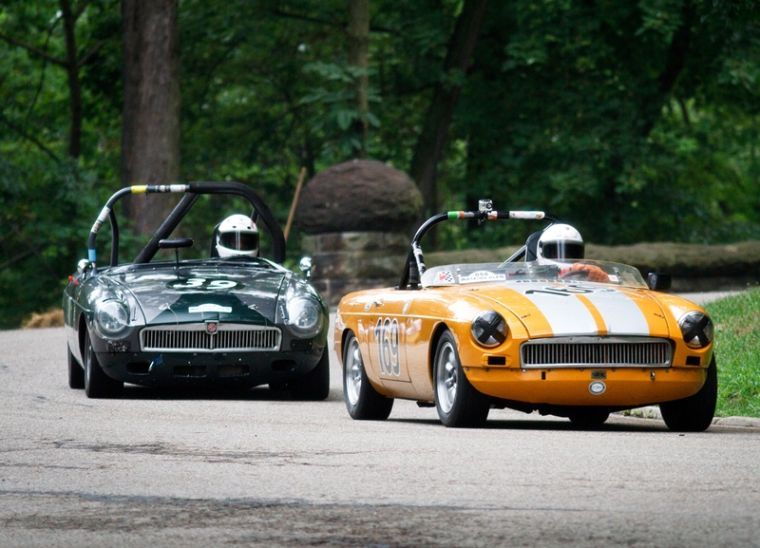Pittsburgh Vintage Grand Prix provides a glimpse into the past
July 22, 2013
During one weekend every year, Schenley Park becomes a racetrack.
On Saturday, July 20, and Sunday, July 21, the city park popular for jogging, nature walks and golfing will transform into the location of the Pittsburgh Vintage Grand Prix, an auto race that brings together drivers and racing fans from all over the country while compiling a collection of classic cars that date from pre-World War II through the 1970s.
The Grand Prix began 31 years ago, when racing enthusiasts Art McGovern and Mary Beth Gmitter paired up with Myron Cope, the legendary Pittsburgh Steelers broadcaster and Pitt graduate, to create a race that would raise money for two local charities, the Autism Society of Pittsburgh and the Allegheny Valley School.
“It’s the charity aspect that makes the event unique,” said Steven Weber, the PVGP on-site media director. Weber, an active director for 24 years, indicated that, to date — discluding 2013 — the Grand Prix has raised $3.2 million for the two charities.
In addition to its distinction as a charity race, the PVGP is among the increasingly small number of vintage car races that are held on city streets rather than on racetracks. According to Michael Zappa, an avid vintage car racer and member of the PVGP board of directors, the Schenley Park races are now the longest consecutive-running vintage street event.
Zappa, a Pitt graduate, has raced in the PVGP for at least 20 years and traced his love of the event back to his days as a student, when he drove around the park at speeds he would rather not admit. With Schenley Park boasting 21 turns, three of which are 180 degrees, Zappa was ecstatic when he learned he would actually be allowed to drive fast there.
It’s not just a joyride, though, noted Zappa. All drivers must have racing licenses, fire- and crash-resistant gear, and their vehicles must undergo an extensive safety inspection. In addition, all 228 cars are checked to ensure that they comply with the PVGP rules, which help to keep the race authentic to its respective era.
“The idea is that you race the way it was raced then, so there is no unfair driving with modern technology,” said Zappa.
He pointed to brakes as one example of the unique rules of a vintage race. While brake pads could be made of modern material, the rotor style and caliper must be authentic to that vehicle.
There are eight groups of cars in the race, and the grouping is based on the decade in which the car was manufactured. Group 8, the Mambo Combo race, which includes cars from different decades, is the largest classification, with 52 drivers participating.
Twenty-year racing veteran Dotti Bechtol agreed with Zappa, mentioning that one of her cars, a 1959 Elva, had drum brakes, no power steering and a primitive suspension — challenges exacerbated by the quirks of Schenley Park.
Bechtol found her way to Schenley after inheriting her father’s love of American cars and forming her own interest in exotic sports cars. These days she races a 1972 Porsche 914.6, a 300-horsepower racecar that’s not street-legal. While she acknowledged that she was in the minority as one of three or four female racers among 50 or so men, she said that she’d never had any issues navigating through a male-dominated sport and had never been treated differently because of her sex.
“There’s no discrimination,” she said. “Gentlemen do not let me go fast just because I’m a woman.”
Above all else, the Vintage Grand Prix’s distinct use of space creates a race that’s entirely unique and highly demanding.
“It’s so different from other race tracks,” Bechtol said. “The road is crowned. There are curves and stone walls. You have to keep your wits about you.”



